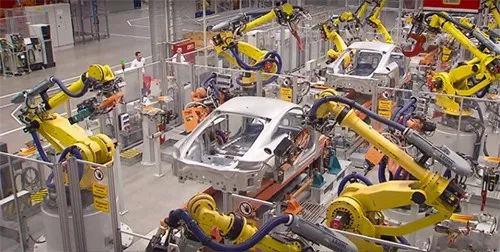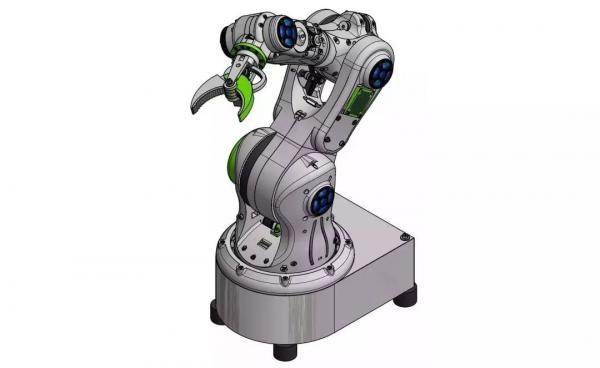
What is the definition of industrial robots?
A robot is a machine that has more degrees of freedom in three-dimensional space and can realize many anthropomorphic actions and functions, while an industrial robot is a robot that is applied in industrial production. Its characteristics are: programmable, anthropomorphic, versatile, mechatronics.

2. What are the subsystems of industrial robots? What is their respective role?
• Drive system: A transmission that allows the robot to operate.
·Mechanical structural system: A multi-degree-of-freedom mechanical system consisting of three parts: the fuselage, the arm, and the end tool of the manipulator.
• Receptive system: consists of an internal sensor module and an external sensor module to obtain information on the internal and external environmental conditions.
• Robot & Environmental Interaction System: A system that enables industrial robots to communicate and coordinate with devices in the external environment.
· Human & Machine Interaction System: A device that the operator participates in the robot control to communicate with the robot.
• Control system: The robot's operating command program and the signal fed back from the sensor govern the robot's actuator to perform the specified motion and function.
3. What is the freedom of the robot? How many degrees of freedom does the robot position operation require? How many degrees of freedom does the gesture operation require?
The degree of freedom refers to the number of independent coordinate axes that the robot has. It should not include the opening and closing degrees of freedom of the claws (end tools). It requires six degrees of freedom to describe the position and posture of an object in three-dimensional space. With 3 degrees of freedom (waist, shoulder, elbow), the attitude requires 3 degrees of freedom (pitch, yaw, roll).
The freedom of industrial robots is designed according to their purpose, and may be less than 6 degrees of freedom or more than 6 degrees of freedom.
4. What are the main technical parameters of industrial robots?
Degree of freedom, repeat positioning accuracy, working range, maximum working speed and carrying capacity.
5. What is the role of the fuselage and arm? What issues should I pay attention to when designing?
The fuselage is a component that supports the arm. Generally, it can realize the movement of lifting and lowering, and the body should have sufficient rigidity and stability when designing the body. The movement should be flexible, and the length of the guide sleeve for lifting and lowering movement should not be too short to avoid jamming. Generally, there must be a guiding device; the structural arrangement should be reasonable. The arm is a component that supports the static load of the wrist and the workpiece, especially when moving at high speed, it will generate a large inertia force, causing impact and affecting the accuracy of positioning.

When designing the arm, pay attention to high rigidity, good guiding, light weight, smooth motion and high positioning accuracy. Other transmission systems should be as short as possible to improve transmission accuracy and efficiency; the layout of each component should be reasonable, and the operation and maintenance should be convenient; special considerations should be taken in special circumstances. In the high temperature environment, the influence of thermal radiation should be considered. Corrosion protection should be considered in corrosive environments. A riot environment should be considered in a hazardous environment.
6. What is the main role of the degree of freedom on the wrist? What kind of freedom should the wrist have if the hand is required to be in any direction in space?
The degree of freedom on the wrist is mainly to achieve the desired posture of the hand. In order to enable the hand to be in any direction of the space, it is required that the wrist can realize the rotation of the three coordinate axes X Y Z of the space. That is, there are three degrees of freedom in flipping pitch and deflection.
















 RCCN WeChat QrCode
RCCN WeChat QrCode Mobile WebSite
Mobile WebSite